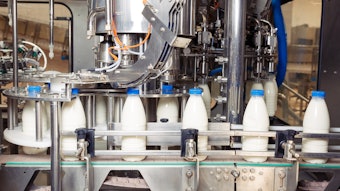
In the challenging area of meat flavors, two closely related chemicals, 2-methyl 3-furanthiol and 2-methyl 3-tetrahydrofuranthiol, compete for our attention. 2-methyl 3-tetrahydrofuranthiol is an old favorite of mine, with a profile that fits easily into any heated flavor profile.
Nevertheless 2-methyl 3-furanthiol (FEMA GRAS #3188, CAS #28588-74-, COE #11678, DG SANTE #13.055) is clearly the logical winner. It is easily the best “bang for your buck,” being stronger and also less expensive. Both chemicals are predominantly in the “boiled” aroma category, but 2-methyl 3-furanthiol has a more obvious hint of meat. It performs very well in meat and seafood flavors and also finds a role in other savory and nut profiles.
Note that the dose rates given throughout this article are the levels suggested for use in flavors intended to be dosed at 0.05% in ready-to-drink beverages or in a simple bouillon.
Meat Flavors
Bacon: Levels of 2-methyl 3-furanthiol in bacon flavors depend on the target profile. Twenty five ppm is a good starting point, but higher levels are also effective.
Beef, Roast: The profile of roast beef flavors encourages an unsubtle addition of this powerful ingredient. One hundred ppm is perfect.
Chicken: Most chicken flavors shine with a slightly more cautious addition of 2-methyl 3-furanthiol, around 50 ppm.
Ham: Fifty ppm is also a good level in most ham flavors, but higher levels can be used if needed.
Lamb: The same level of this raw material, 50 ppm, introduces a good cooked meat note to lamb flavors.
Liver: Liver flavors, as a general category, are not exactly subtle, but they do not need a powerful cooked note. Ten ppm of 2-methyl 3-furanthiol is adequate.
Pork: Pork flavors are a very different matter. This raw material fits perfectly into the profile of most pork related flavors, and 100 ppm is just a starting point.
Venison: In many respects venison flavors can be compared with beef flavors, minus the fatty notes. One hundred ppm is ideal.
 2-Methyl 3-furanthiol is a perfect cooked note for all fish and seafood flavors.ahirao at Adobe Stock
2-Methyl 3-furanthiol is a perfect cooked note for all fish and seafood flavors.ahirao at Adobe Stock
Seafood Flavors
Crab: 2-Methyl 3-furanthiol is a perfect cooked note for all fish and seafood flavors, just with a somewhat dialed back level compared with meat flavors. Ten ppm is an excellent level for crab flavors.
Lobster: Somewhat higher levels, up to 30 ppm, are effective in lobster flavors, giving a boiled effect without becoming overly meaty.
Seaweed: Even at levels as low as one ppm, 2-methyl 3-furanthiol has a noticeable impact on seaweed flavors.
Shrimp: Twenty ppm is a good level in shrimp flavors, adding an attractive cooked character.
Tuna: This raw material is a great fit in tuna flavors. It evokes the profile of seared tuna steaks perfectly at 10 ppm.
Savory Flavors
Butter, Cooked: Levels of addition of 2-methyl 3-furanthiol in heated butter flavors vary considerably with the effect desired. Ten ppm is probably an upper limit.
Cheese, Toasted: Exactly the same comments apply to heated cheese flavors, but the range is broader. One hundred ppm is the upper limit.
Garlic, Fried: Much lower levels work better in fried garlic flavors. There is still a range of possibilities, starting at three ppm.
Mushroom, Cooked: Three ppm is also effective in simply cooked mushroom flavors, moving higher in dairy-based sauces.
Onion, Fried: Fried onion flavors are similar to fried garlic flavors. Levels of addition of 2-methyl 3-furanthiol range from two ppm and up.
Rice, Cooked: Cooked rice flavors are usually subtle. Two ppm of 2-methyl 3-furanthiol works very well.
Sesame: Five ppm of 2-methyl 3-furanthiol enhances the impact and complexity of sesame flavors.
Nut Flavors
Almond: 2-Methyl 3-furanthiol is a very useful modifier of all nut flavors. It works at a subtle, rather than obvious, level and additions reflect this. One ppm is a good place to start in almond flavors.
Hazelnut: Hazelnut flavors are a little less restrained and eight ppm is a better starting level.
Peanut: This also applies to peanut flavors, perhaps at a slightly lower level of Pistachio flavors benefit from one ppm of 2-methyl 3-furanthiol.Olena Rudo at Adobe Stock
Pistachio flavors benefit from one ppm of 2-methyl 3-furanthiol.Olena Rudo at Adobe Stock
Pistachio: Pistachio flavors have a lot of points in common with almond flavors, including the suggested one ppm level of 2-methyl 3-furanthiol.
Walnut: Two ppm is more effective in walnut flavors, still very much in the subtle modifier category.
Other Flavors
Bread: Bread flavors vary considerably in character, and it is hard to set a good starting level of addition for 2-methyl 3-furanthiol. Five ppm is a reasonable estimate.
Butterscotch: 2-Methyl 3-furanthiol can be helpful in butterscotch and other similar flavors at levels of addition ranging from 10 to 30 ppm.
Chocolate: A similar 10 to 30 ppm range works well in chocolate flavors, with milk chocolate profiles shifting towards the higher end of the range.
Coconut, Toasted: Five ppm of 2-methyl 3-furanthiol adds an attractive cooked element to toasted coconut flavors.
Coffee: Two ppm is a good initial level in simple coffee flavors, but higher levels can be better than those, such as cappuccino, involving a dairy element.
Milk, Condensed: This is one flavor category where I would stick firmly to my preference for 2-methyl 3-tetrahydrofuranthiol, but 2-methyl 3-furanthiol works well enough at 20 ppm.










